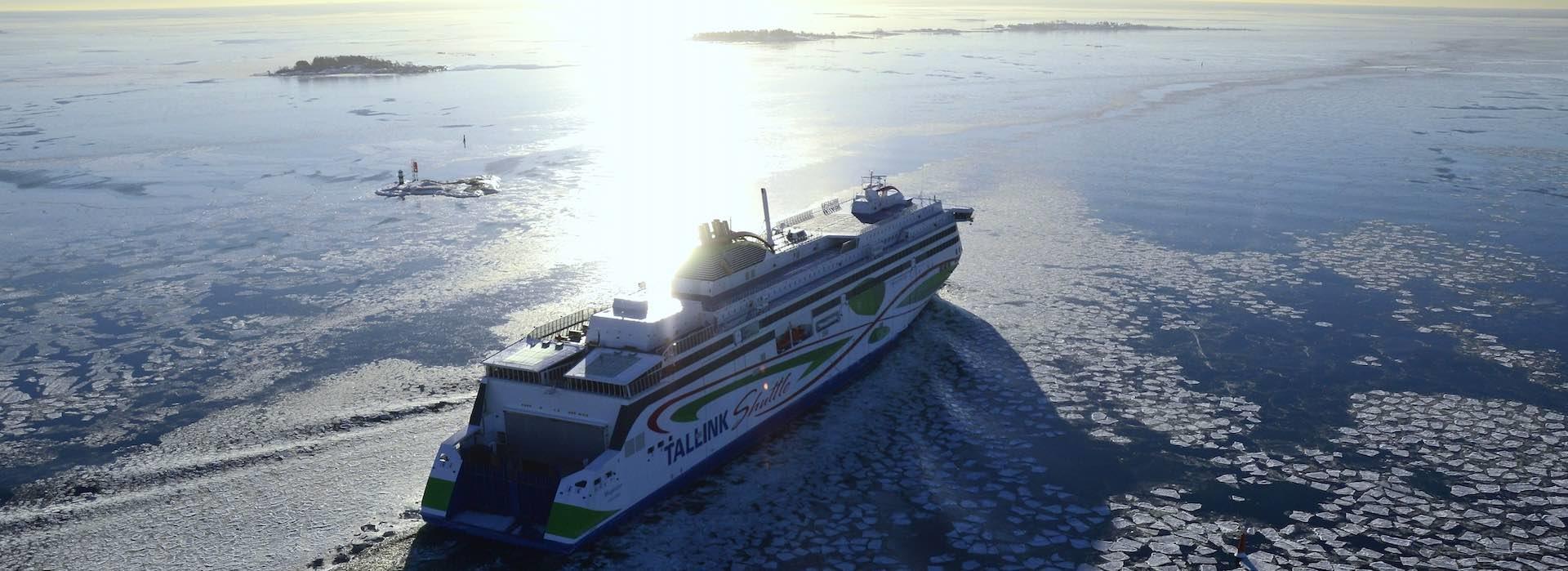

In a challenging environment, increasing efficiency is key for profit margins. Wärtsilä solutions can help.
Every drop of fuel matters in the fiercely competitive world of shipping, and a sharp drop in passenger numbers during the coronavirus pandemic has made increasing efficiency more vital than ever. This is where Wärtsilä’s marine power solutions can prove invaluable – as one ferry company has already discovered.
Like other forms of transport across the world, ferries were significantly impacted by the economic shutdowns that resulted from Covid-19. Even those carrying cargo faced a significant revenue hit as passenger numbers dropped sharply, including Estonian shipping company Tallink Grupp.
The company operates 14 roll-on roll-off passenger ferries on the Baltic Sea between Estonia, Finland, Sweden, and Latvia and, as elsewhere, its services were badly hit by the pandemic. Normally able to carry more than 2,000 passengers and 450 cars, each service fell quiet as the restaurants and shops were left empty. “The Covid-19 pandemic has been very challenging for us,” says Tarvi-Carlos Tuulik, Head of Ship Management at Tallink Grupp.
“In spring, there was a total lockdown due to states of emergency declared in the different countries where we operate and, for a period of time, we could only continue with cargo transport between Estonia and Finland, and our other routes. There were no tourists at all. We hoped that we would see some recovery during the summer and there was some increase in passenger traffic, but still not to the extent that would provide significant relief for our business.”
“No tourists at all”
The financial impact of having few passengers becomes clear considering Tallink Grupp’s business model, whereby the company earns a significant proportion of its revenue from on board sales. Under its normal operation model, more than half (55%) of the company’s revenue comes from onboard sales, with ticket sales accounting for 36% and cargo a mere 13%. Tallink Grupp’s revenue in Q2 2020 decreased by 74.6% compared to the same period in 2019.
At first, there were hopes that passenger numbers might rise starting from May, traditionally the best season for ferry companies in the region. However, as the pandemic and its impact continued, Tallink saw a 50.2% drop in passenger numbers in July compared to the previous year.
So, any efficiencies made elsewhere have proved critical for Tallink, even if no one foresaw a crisis caused by the global pandemic. “It’s most important for us to reduce operational costs,” says Tuulik. “And I can say Wärtsilä’s EnergoProFin can be a good tool to achieve this kind of target.”
The EnergoProFin is an energy-saving device that comes in the form of a propeller cap with hydrofoil section fins on the post-swirl side of the propeller. It was used to upgrade the Tallink Star ferry. New combinator curves were also designed as part of the Propulsion Control System upgrades.
When Tallink started planning the upgrade, the company initially sought a tool to reduce cavitation of the vessel’s rudder plates. But having tested EnergoProFin for two years, the ferry operator can now confirm there was an added benefit of a reduction in fuel consumption.
“It depends on different conditions, but estimates are between 2-5%. We’re really satisfied with the result and are planning to extend EnergoProFin installation on board our ships,” says Tuulik.
Plans to extend installation
Tuulik’s estimates stand in parallel with Wärtsilä’s own projections. In addition to enabling fuel savings of up to 5% and reducing cavitation and propeller hub vortex, EnergoProFin can reduce emission levels and generate a return on investments in less than a year, according to Andres Part, account manager at Wärtsilä.
The Wärtsilä system is easy to install, and underwater installation also possible. In addition to its operational benefits, less vibration and reduced pressure pulses make for a smoother journey and greater comfort onboard – an observation backed by Tuulik.
Tallink is so satisfied with the results of the EnergoProfin installation that the company is planning to extend the upgrade to all its ships. While plans are currently on hold due to the wider economic situation, the company hopes to go ahead with installation as soon as possible. Indeed, technical assessments on the company’s longer routes have already started.
In the meantime, Tallink Grupp – along with other ferry operators – is waiting for passengers to return to sea. Indeed, numbers have dropped so low that the operator plans to lay up five of its ships in their home ports this winter – something unheard of in a normal year.
As for the future, the Tallink Grupp upgrade could perhaps prove something of a model for making small gains to help get through the crisis and beyond. For any upgrades that lead to emission reduction and fuel saving can support innovation across the shipping industry, and at no time is this more important when it comes to post-pandemic recovery.



